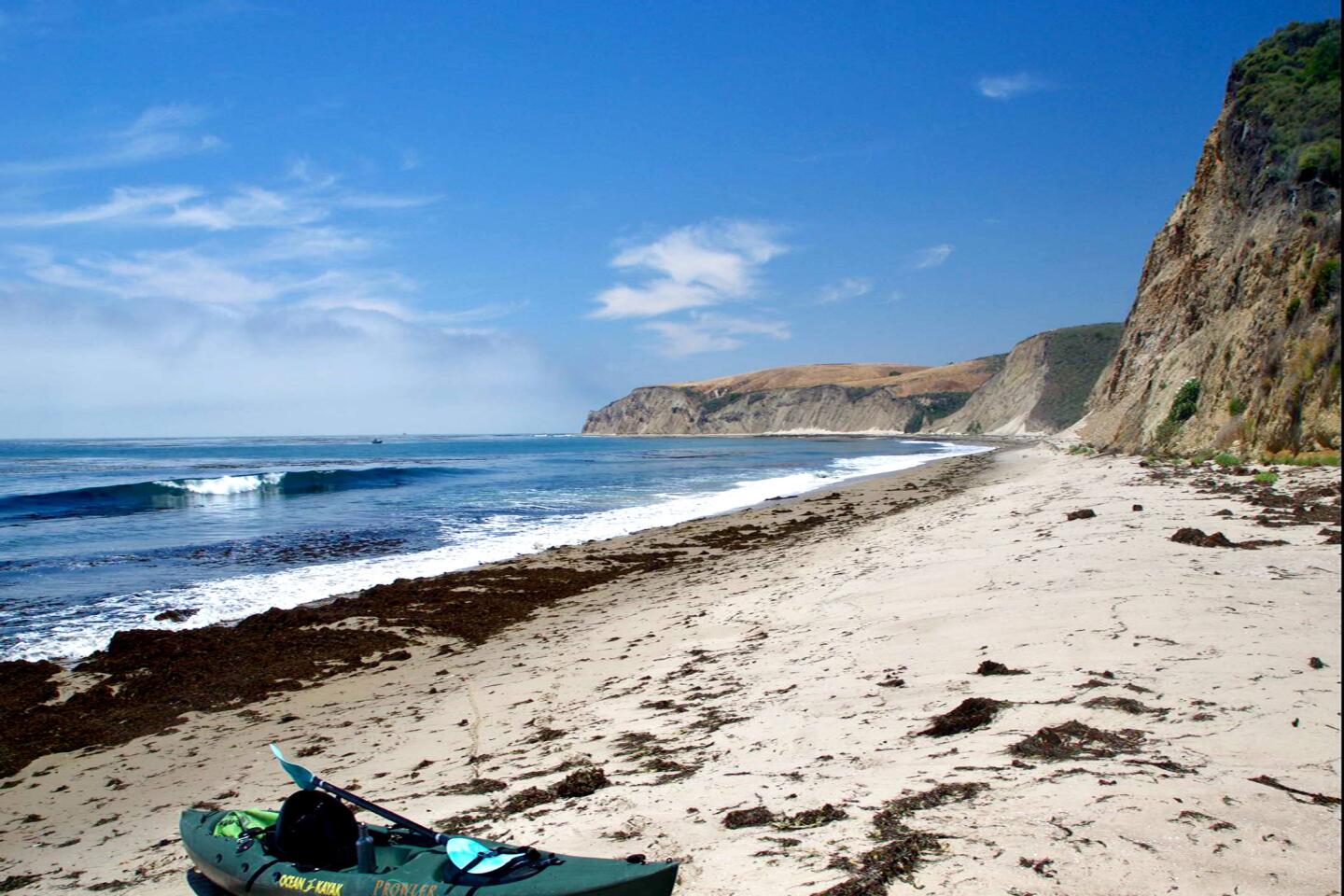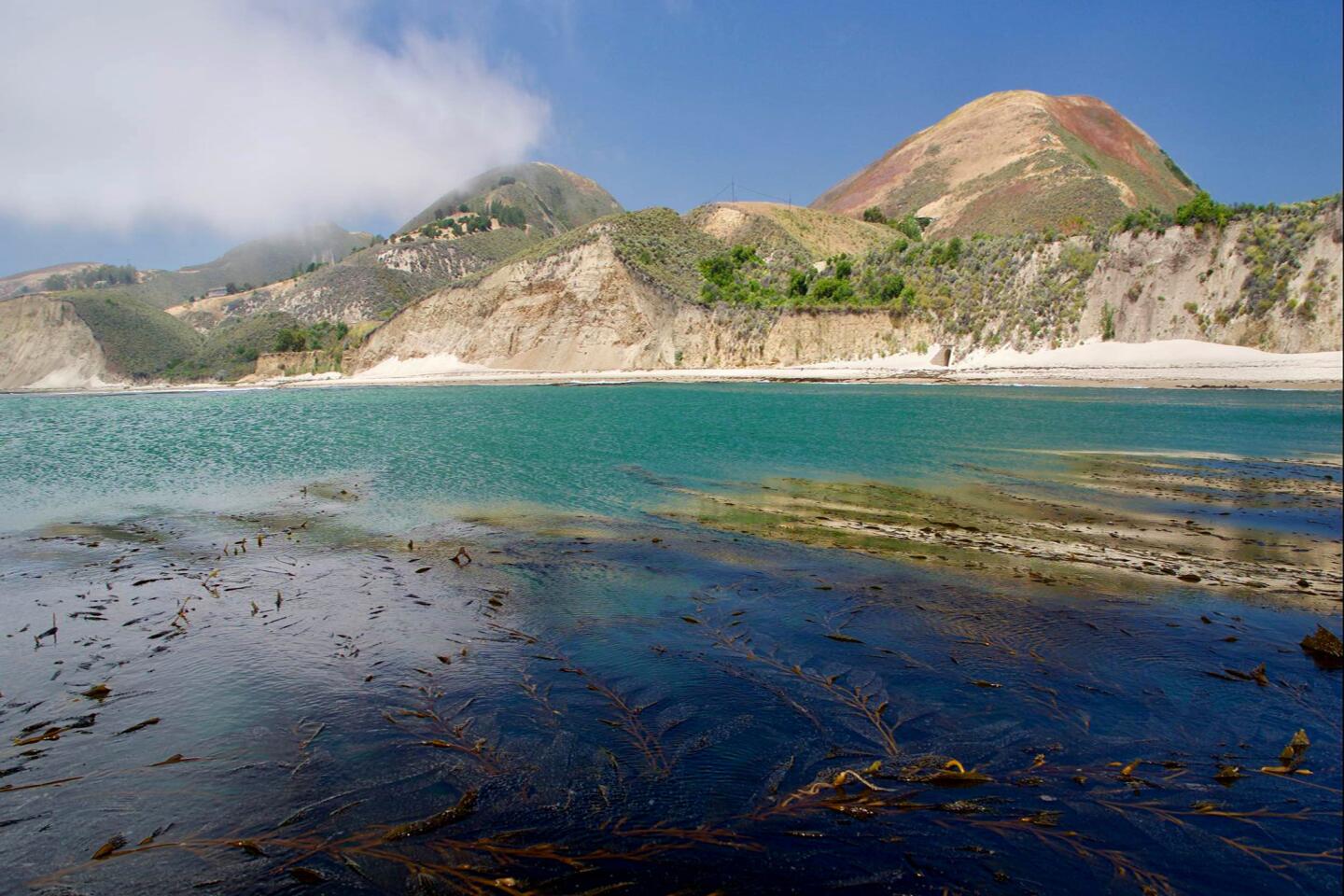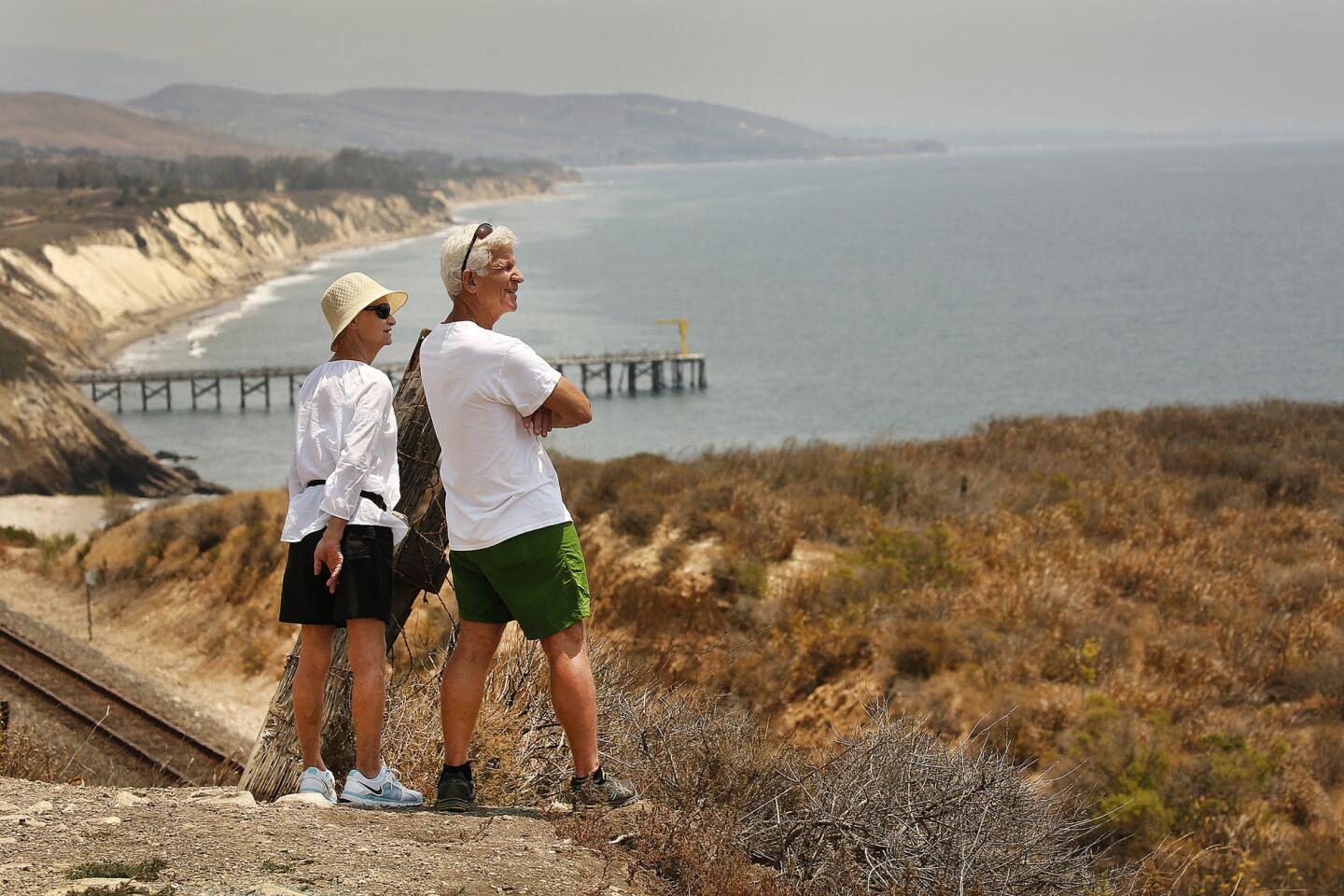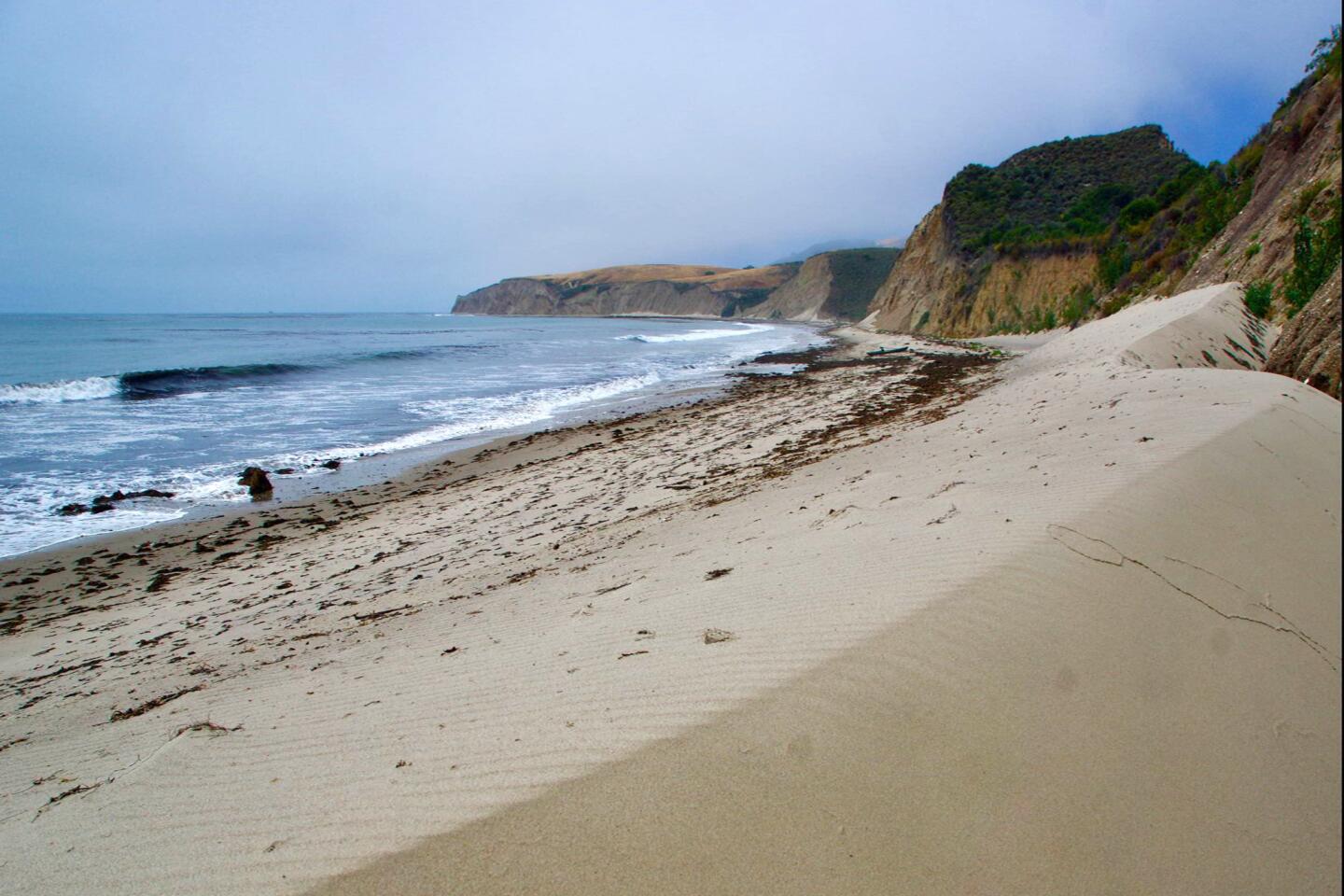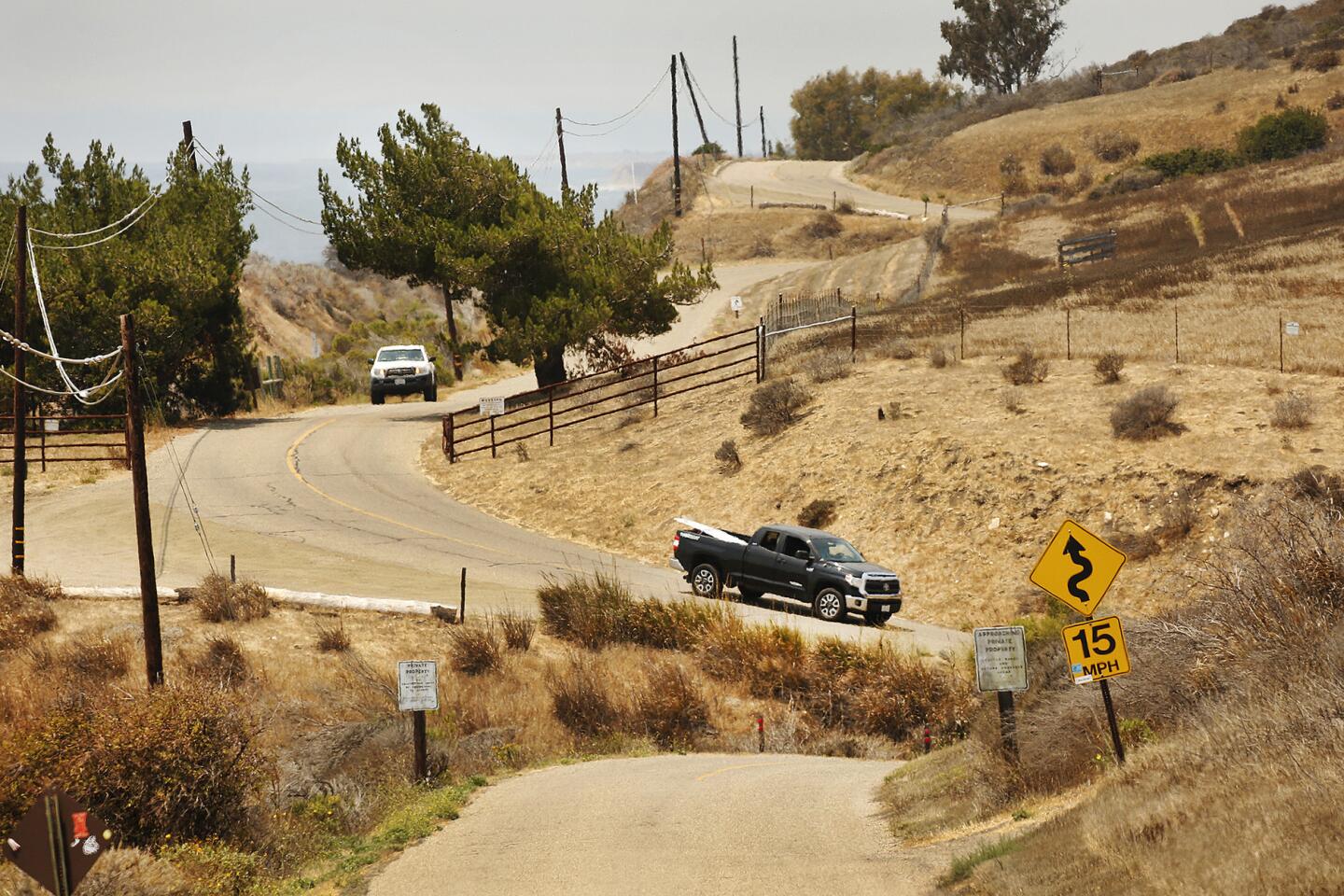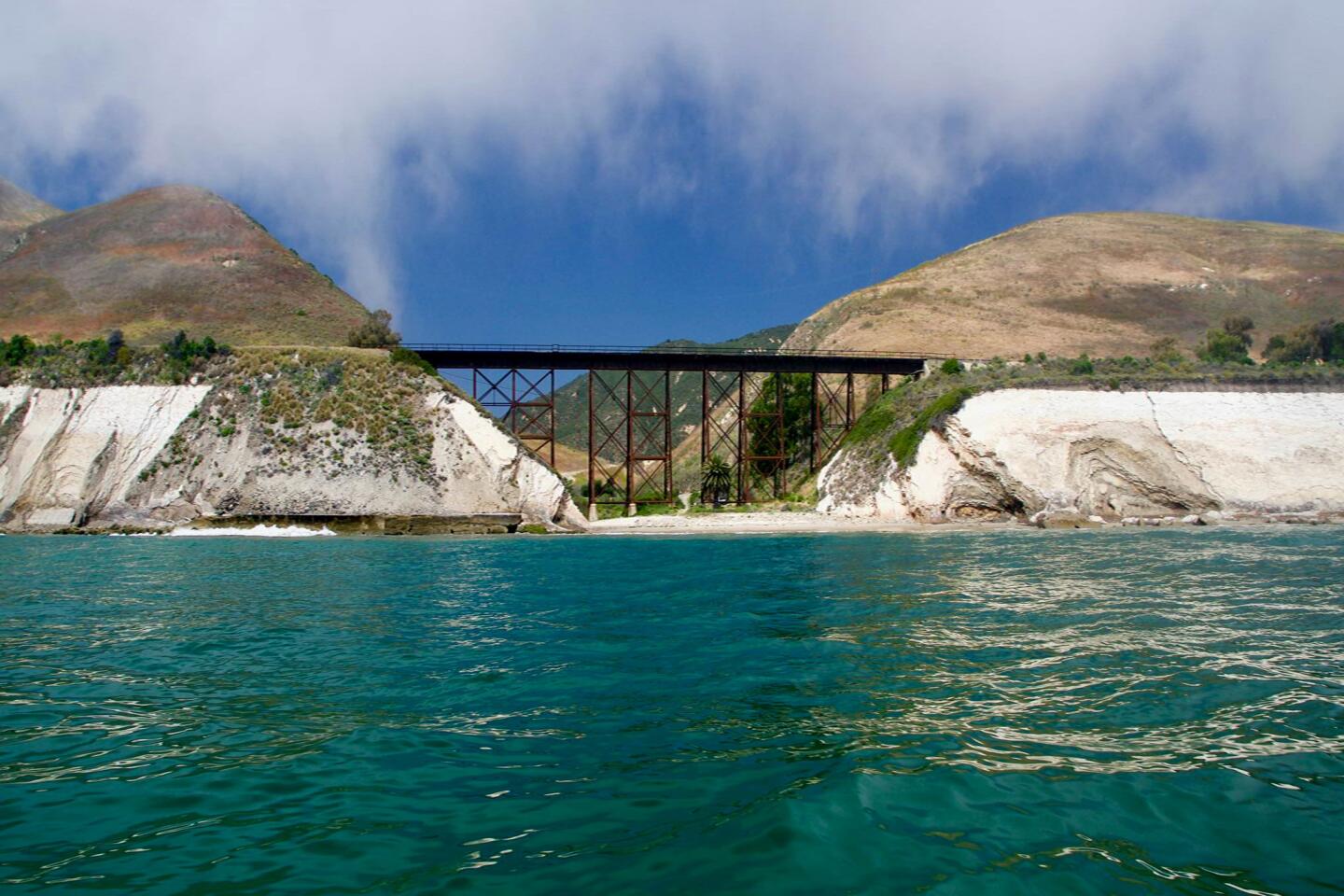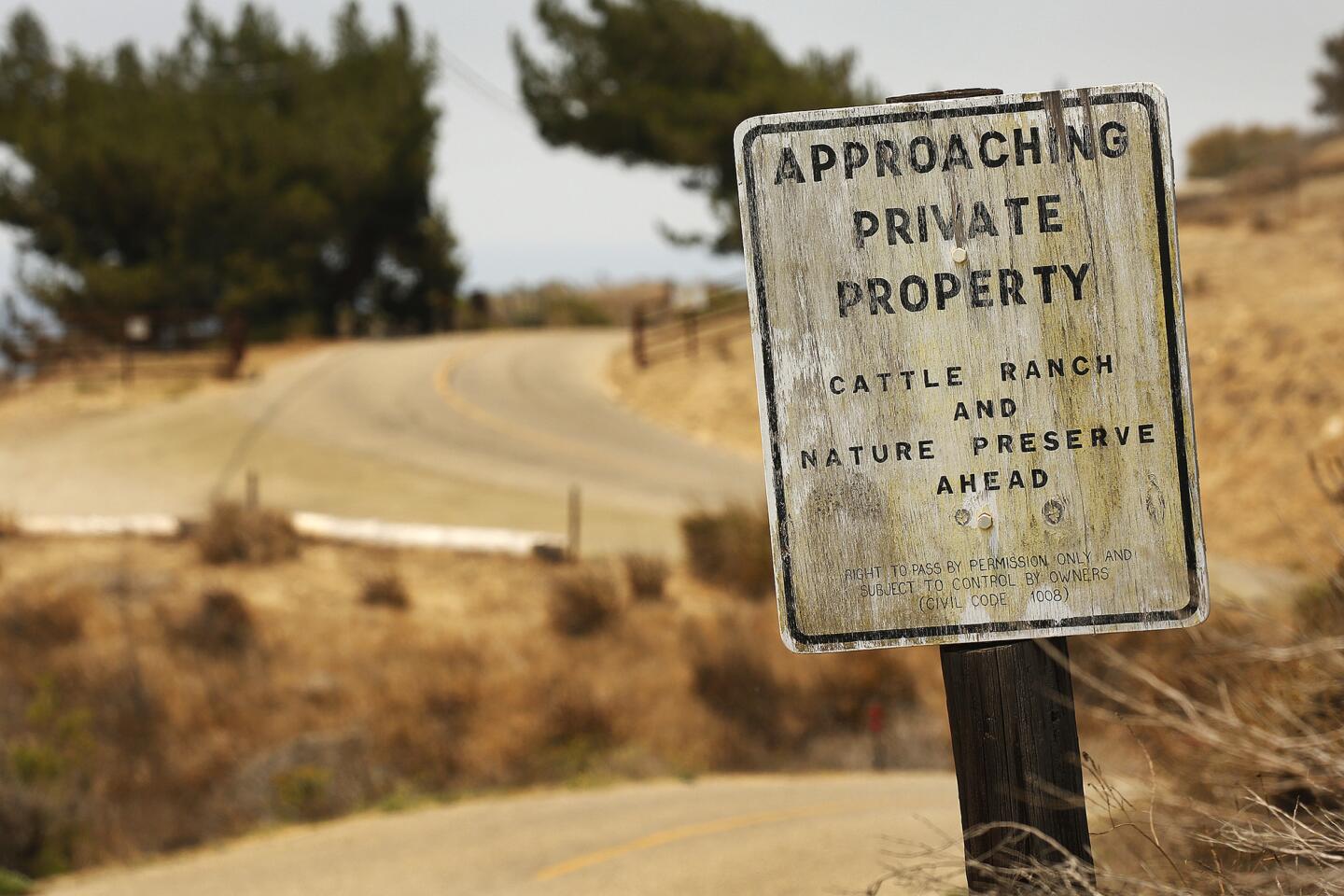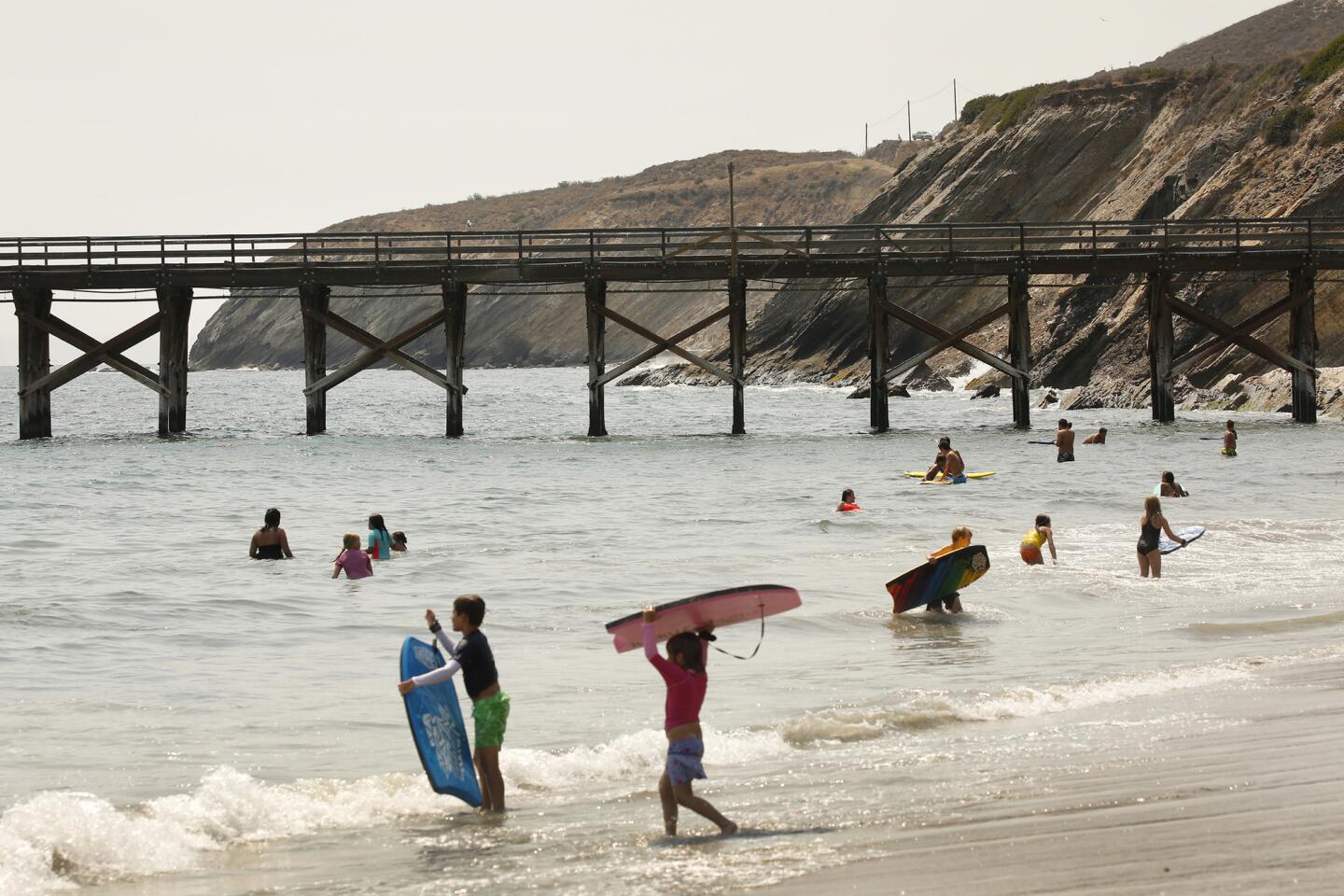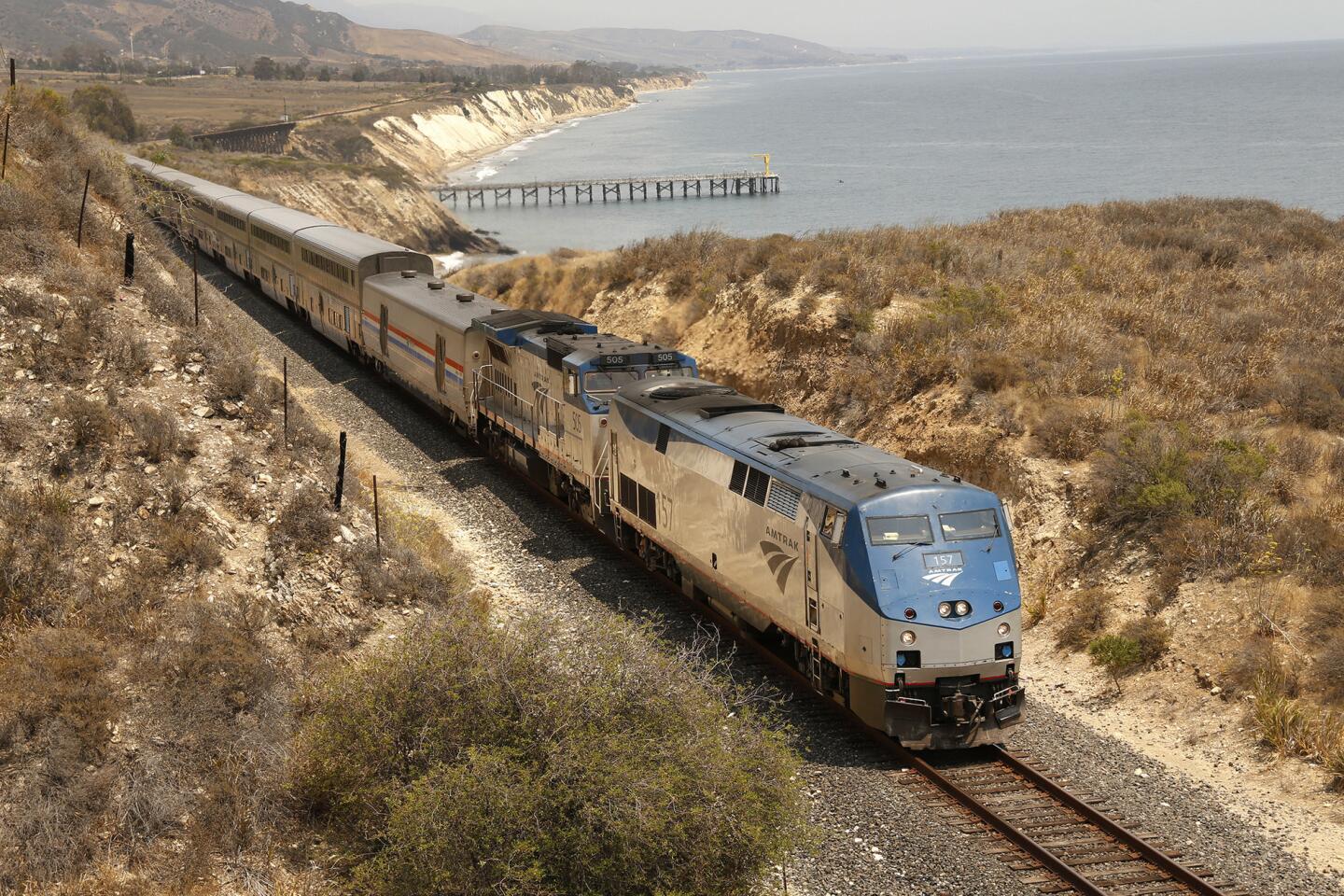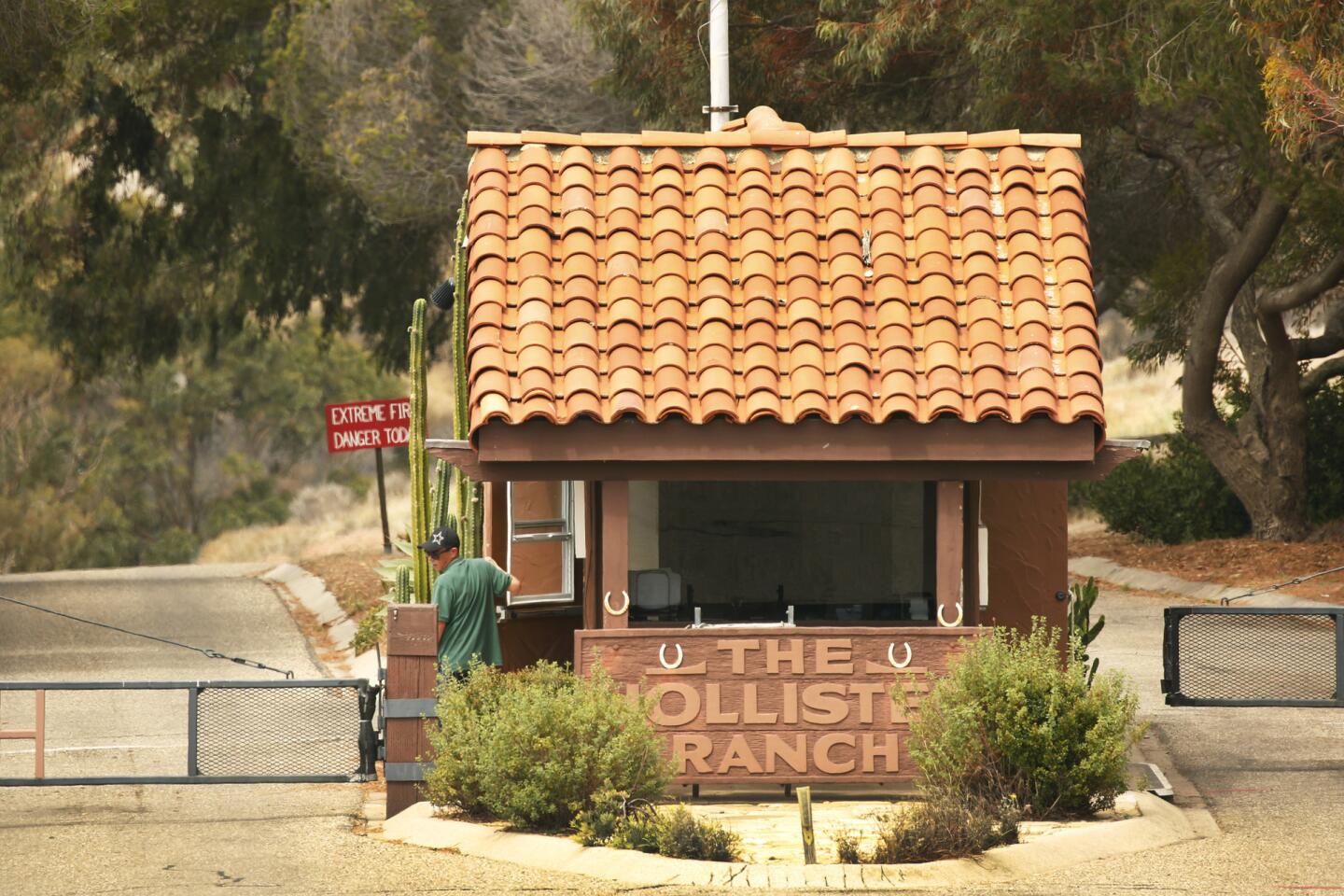Soon you can visit this pristine California beach — if you’re a nearby landowner, on a guided tour or willing to paddle 2 miles
Reporting from Santa Barbara — One of California’s least tarnished stretches of coastline will be accessible only to wealthy property owners, visitors with guides and those who can boat or paddle two miles under a deal between state officials and landowners in Hollister Ranch, who have for decades fought to keep their beaches almost entirely to themselves.
The settlement — signed by the California State Coastal Conservancy and the state Coastal Commission on one side and the Hollister Ranch Owners Assn. on the other — grants the public a roughly three-quarter-mile section of beach, accessible only by ocean “via surfboard, paddleboard, kayak or soft-bottom boat.” The beach is about two miles from Gaviota State Park beach.
The homeowners group also will expand its after-school tide pool program and organize nonprofit group trips that would bring in about 400 people a year to its secluded beaches west of Santa Barbara.
Coastal officials in turn agreed to give up the only public access route via land to which they could claim rights by citing a decades-old technicality that has been under legal dispute.
The settlement comes at a time when high-powered interests across California are fighting the state’s landmark Coastal Act, which declares that access to the beach is a fundamental right guaranteed to everyone. Up north at Martins Beach, Silicon Valley billionaire Vinod Khosla is challenging the very constitutionality of this law with a U.S. Supreme Court appeal.
The Hollister Ranch deal, negotiated quietly in recent months, caught coastal advocates off guard this week as news trickled out.
Susan Jordan, executive director of the California Coastal Protection Network, said she was troubled by what appears to be a setback for coastal access and was concerned that the public seemed to be clued in after the fact.
“We’re about public access for all, not just for some. … This is a lot to give up,” said Jordan, who is still reviewing the details of the settlement. “I’m also troubled by the whole getting there by boat. … Most people don’t have boats. It limits who can go there. Right from the get-go, that’s a huge problem.”
Santa Barbara Superior Court Judge Colleen Sterne on Monday granted preliminary approval to the deal. But in an unusual legal twist, Sterne offered the public a potential avenue to intervene. She requested that the terms of the settlement be published in a local newspaper, along with a call for any interested member of the public to get involved. Attorneys agreed to send a notice to the Santa Barbara News-Press to be published once a week for four weeks.
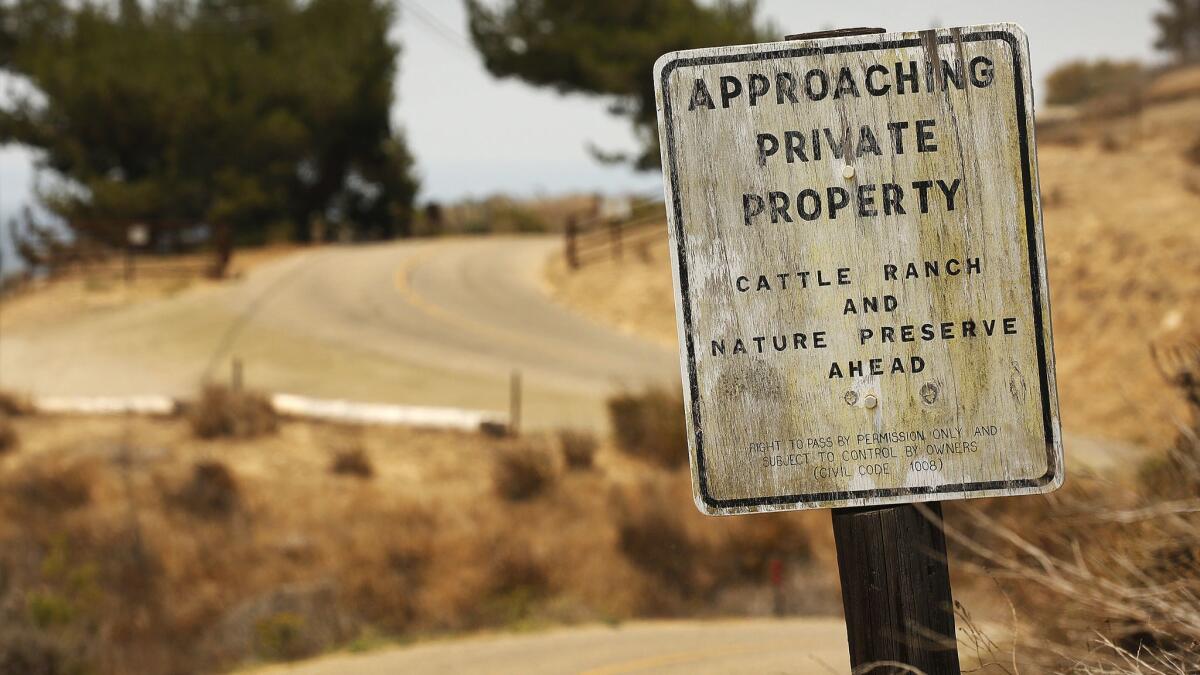
“Because the settlement abandons disputed rights of public access, the court raised the issue of whether, and to what extent, notice must, or should, be provided to the affected public,” according to the tentative ruling. “The court is concerned that … affected members of the public would not have sufficient knowledge of the existence of this action and settlement to exercise rights to request intervention should any affected member of the public want to do so.
“If any motion to intervene is filed, the court can address the merits of the motion(s) at that time,” the ruling stated. “A full inquiry into the fairness of the proposed settlement occurs at the final approval hearing.”
Jack Ainsworth, executive director of the Coastal Commission, said, “We appreciate the court’s sensitivity to the public’s interest in this decision and look forward to hearing the public’s feedback.” He described Hollister Ranch as “a challenging site with a complicated history.”
Hollister Ranch, with rolling hills and a chain of reefs and scenic points that produce perfectly shaped waves for surfing, contains 8.5 miles of pristine beaches, a 2.2-mile-long shoreline preserve and 136 parcels owned by hundreds of individuals — including Patagonia founder Yvon Chouinard, singer-songwriter Jackson Browne and movie producer James Cameron, who operates a “bio-dynamic” farm complete with a helicopter pad.
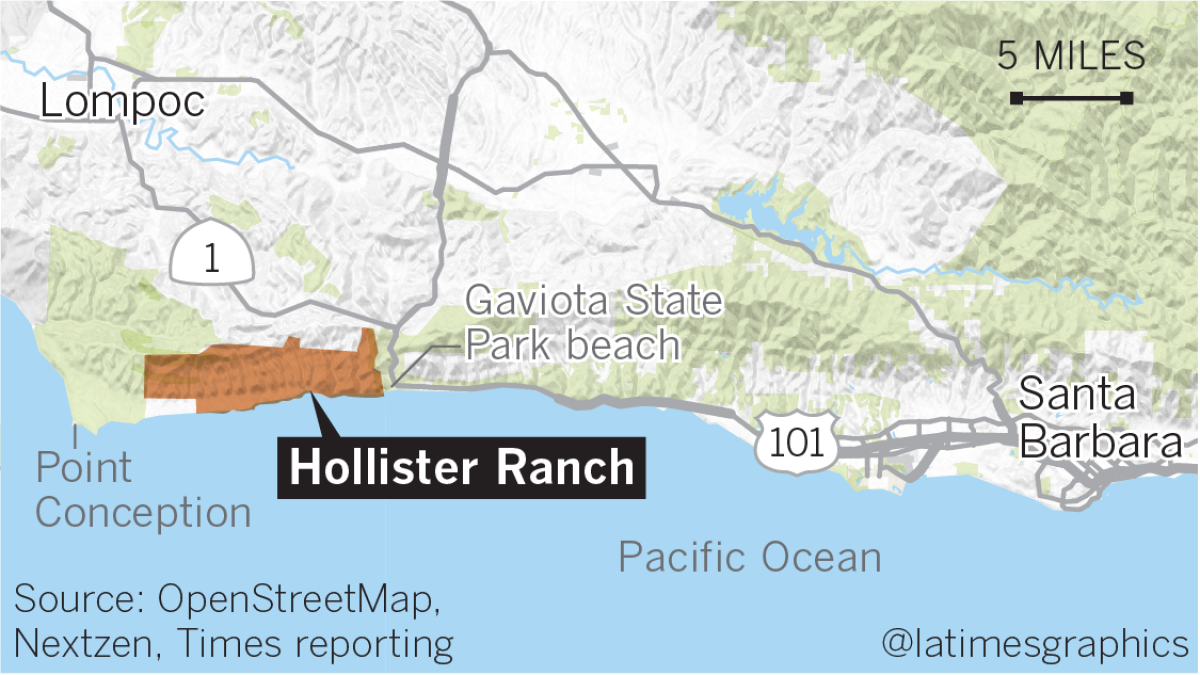
The clash over property rights and public access began about 40 years ago when a group of landowners sued the Coastal Commission for requiring public easements as a condition of their development permits. They ended up paying an in-lieu fee of $5,000 that was created by the Legislature.
With Hollister Ranch essentially exempted from the typical coastal access provisions required of most beachside properties, the last shot the state had for public access by land was a rugged, difficult-to-navigate road that the YMCA had offered in 1982 as a condition of approval for a recreational center.
The ranch association successfully sued in 1982 to halt the YMCA’s construction and obtained the property as the result of a settlement. Attorneys since have argued that the proposed easements should be canceled because the YMCA never had the authority to grant them to the state.
Now, coastal officials are agreeing to give up any claim to this public access way. With so many restrictions and limited options, they said, the deal at least provides more public access than before.
“Hollister Ranch was given a special exemption that has, until now, enabled it to block all public access to the coast,” Sam Schuchat, the State Coastal Conservancy’s executive officer, said. “Given the uniquely difficult circumstances presented by Hollister Ranch, we are glad to have reached an agreement that would increase public access to this pristine stretch of coast for the first time, and we welcome the public’s involvement in this process.”
Monte Ward, president of the Hollister Ranch Owners Assn., called the settlement “an appropriate resolution.”
“We believe the settlement reflects an appropriate balance of interests — including managed public access to the beach and the continued privacy and security of the Ranch residents,” Ward said in a statement. “It also assures that the valuable natural resources along the coastline will be respected and protected into the future.”
Read more about Hollister Ranch and the fight over public rights to use the beach »
The ranch has infamously kept the public at bay with a guard shack, gates and security patrols. Some owners also have resorted to intimidation and harassment, even when outsiders were in state waters or on the public portion of beach below the mean high-tide line, according to owners and government reports.
Over the years, owners have fought to keep things their way. When the Clinton administration proposed turning 46 miles of coastline in northern Santa Barbara County into a national seashore, the ranch association raised $300,000 to hire a lobbyist to oppose the idea.
Landowners have contended that letting the public in could spoil the ranch’s coastline and undo years of effort to protect the environment. They point to the temporary access that they already grant to scientists, academics, historical societies, environmental groups and schoolchildren.
Under the recent settlement, the owners group has agreed to expand the Hollister Ranch Managed Access Program, which its attorneys said has been in effect for more than 20 years. The agreement includes providing at least 24 opportunities a year for K-12 groups of at least 20 students to learn about the tide pools and marine ecosystems.
Hollister Ranch also has historically invited disabled veterans and other underserved groups to visit its beaches in a safe and secure environment, attorneys said. This program will be expanded to serve up to about 400 people a year.
Any member of the public who objects to the settlement has until late July to file a motion. The judge agreed to reconvene in September for a final hearing on whether to approve the settlement, officials said.
Ralph Faust, the Coastal Commission’s general counsel from 1986 to 2006, said that when it comes to protecting coastal access, the California Constitution says clearly it’s “better to have fought and lost than put a stamp of approval on this window dressing.”
“We, the commission and the attorney general, once were willing to fight for that easement, which would give the ordinary public an opportunity for genuine access,” he said. “This just gives the public what the owners were willing to give all along: very limited and controlled access.”
Groups such as the Gaviota Coast Conservancy, which has been following the issue for more than a decade, said they appreciated the judge’s acknowledgment of the public’s stake in the matter. The conservancy is reviewing the settlement carefully and will determine a course of action in coming weeks.
Jordan, of the California Coastal Protection Network, urged the public to “take a very, very close look at this and make your voices heard.”
“It seems to me that if the public had a seat at this table,” she said, “the terms of the settlement might’ve been different.”
Interested in coastal issues? Follow @RosannaXia on Twitter.
UPDATES:
2:40 p.m.: This article was updated to include comment from Ralph Faust, the Coastal Commission’s general counsel until 2006.
8:05 a.m.: This article was updated to reflect that the section of Hollister Ranch beach being opened to the public via the ocean is about two miles from Gaviota State Park beach.
This article was originally published at 7:25 a.m.
More to Read
Sign up for Essential California
The most important California stories and recommendations in your inbox every morning.
You may occasionally receive promotional content from the Los Angeles Times.
